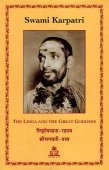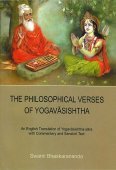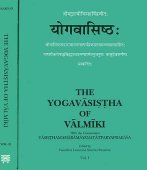Shankaracarya, Shankara-acarya, Śaṅkarācārya, Śaṅkarācharya: 11 definitions
Introduction:
Shankaracarya means something in Hinduism, Sanskrit, the history of ancient India, Marathi. If you want to know the exact meaning, history, etymology or English translation of this term then check out the descriptions on this page. Add your comment or reference to a book if you want to contribute to this summary article.
The Sanskrit terms Śaṅkarācārya and Śaṅkarācharya can be transliterated into English as Sankaracarya or Shankaracarya or Sankaracharya or Shankaracharya, using the IAST transliteration scheme (?).
Alternative spellings of this word include Shankaracharya.
In Hinduism
Vaishnavism (Vaishava dharma)
Source: ISKCON Press: GlossaryŚaṅkarācārya (शङ्कराचार्य).—An incarnation of Lord Śiva who appeared in South India at the end of the 7th century A.D. to re-establish the authority of the Vedic scriptures. He was a philosopher and lived about three hundred years before Rāmānuja. He did this at a time when India was under the sway of Buddhism, whose tenets deny the authority of the Vedas. He took sannyāsa at a very tender age and wrote commentaries establishing an impersonal philosophy similar to Buddhism, substituting Brahman (Spirit) for the void. He traveled all over India defeating the great scholars of the day and converting them to his doctrine of Māyāvāda, the advaita (non-dualism) interpretation of the Upaniṣads and Vedānta.
Source: Pure Bhakti: Bhagavad-gita (4th edition)Śaṅkarācārya (शङ्कराचार्य) refers to “a propagator of māyāvāda, or impersonalism, under-stood to be an incarnation of Lord Śiva”. (cf. Glossary page from Śrīmad-Bhagavad-Gītā).
Source: Pure Bhakti: Brhad BhagavatamrtamŚaṅkarācharya (शङ्कराछर्य) refers to:—(see Māyāvāda). (cf. Glossary page from Śrī Bṛhad-bhāgavatāmṛta).

Vaishnava (वैष्णव, vaiṣṇava) or vaishnavism (vaiṣṇavism) represents a tradition of Hinduism worshipping Vishnu as the supreme Lord. Similar to the Shaktism and Shaivism traditions, Vaishnavism also developed as an individual movement, famous for its exposition of the dashavatara (‘ten avatars of Vishnu’).
Purana and Itihasa (epic history)
Source: archive.org: Puranic EncyclopediaŚaṅkarācārya (शङ्कराचार्य).—General. The spiritual and philosophical preceptor of India. Śrī Śaṅkara was born in the village of Kālaṭi on the banks of the holy river Periyār, also called Cūrṇā and Pūrṇā. According to certain scholars he was born in 509 B.C. while certain others contend that he saw the light of day in 84 A.D. Yet others place his date of birth in various periods between 509 B.C. and 84 A.D. Whatever that may be, the great ācārya is believed to have lived only for 32 years. (See full article at Story of Śaṅkarācārya from the Puranic encyclopaedia by Vettam Mani)

The Purana (पुराण, purāṇas) refers to Sanskrit literature preserving ancient India’s vast cultural history, including historical legends, religious ceremonies, various arts and sciences. The eighteen mahapuranas total over 400,000 shlokas (metrical couplets) and date to at least several centuries BCE.
Natyashastra (theatrics and dramaturgy)
Source: Shodhganga: Bhismacaritam a critical study (kavya)Śaṅkarācārya (शङ्कराचार्य) or Śaṅkarācāryacarita is the name of a Carita-Kāvya type of Mahākāvya (‘epic poem’).—These carita-kāvyas play an important role in the field of Sanskrit language as biography is a significant sector of any literature. They mainly form a part of biographical literature. [...] The Śaṅkarācārya-carita was written by Shripad Shastri Hasoorkar.

Natyashastra (नाट्यशास्त्र, nāṭyaśāstra) refers to both the ancient Indian tradition (shastra) of performing arts, (natya—theatrics, drama, dance, music), as well as the name of a Sanskrit work dealing with these subjects. It also teaches the rules for composing Dramatic plays (nataka), construction and performance of Theater, and Poetic works (kavya).
General definition (in Hinduism)
Source: India Netzone: Indian PhilosophyAdi Sankaracharya founded four monasteries that helped in the historical development, revival and spread of Advaita Vedanta. Adi Shankara is believed to be the organizer of the Dashanami monastic order and the founder of the Shanmata tradition of worship. He established the importance of monastic life. Shankara is credited for the defeat of Buddhism in Hindu literature. He was active after Buddhism had almost faded from prominence.
In his commentaries Shankara developed a theology in which he tried to establish that spiritual ignorance (avidya) or illusion (maya) is caused by the superimposition (adhyasa) of what is not the self onto the self. All knowledge is distorted by superimposition or projection, which prevents us from seeing our true nature as the self`s (atman`s) pure subjectivity, ontologically identical with the absolute (brahman). In order to realize the truth of the identity of the self with the absolute, a person must develop discrimination.
Source: academia.edu: Tessitori Collection I (hinduism)Śaṅkarācārya (शङ्कराचार्य) is the author of various manuscripts dealing with Hymns and Rituals, which are included in the collection of manuscripts at the ‘Vincenzo Joppi’ library, collected by Luigi Pio Tessitori during his visit to Rajasthan between 1914 and 1919.—Śaṅkarācārya is the author of Sundarīpūjana, Aparādhaśudarastotra, Annapūrṇāstotra.
India history and geography
Source: academia.edu: The Date of Ādi ŚankarāchāryaAdi Shankaracharya (569 BCE) was the greatest philosopher of India who single-handedly demolished the mightiest edifice of the Buddhist philosophy and re-established the authority of ancient philosophy of Upanishads & Vedanta. He was the founder of the theory of Brahmadvaitavada i.e. Non-dualism. He was perhaps the greatest spiritual leader of the world has ever known who re-energized entire country in his short life of 32 years.

The history of India traces the identification of countries, villages, towns and other regions of India, as well as mythology, zoology, royal dynasties, rulers, tribes, local festivities and traditions and regional languages. Ancient India enjoyed religious freedom and encourages the path of Dharma, a concept common to Buddhism, Hinduism, and Jainism.
Languages of India and abroad
Marathi-English dictionary
Source: DDSA: The Molesworth Marathi and English Dictionaryśaṅkarācārya (शंकराचार्य).—m (S śaṅkara & ācārya) The designation of the celebrated teacher of the Wedant philosophy. He is stated to be an incarnation of Shiva. 2 Applied also to the Sunyasi presiding over the several maṭha or colleges established by him.
Marathi is an Indo-European language having over 70 million native speakers people in (predominantly) Maharashtra India. Marathi, like many other Indo-Aryan languages, evolved from early forms of Prakrit, which itself is a subset of Sanskrit, one of the most ancient languages of the world.
Sanskrit dictionary
Source: Cologne Digital Sanskrit Dictionaries: Aufrecht Catalogus Catalogorum1) Śaṅkarācārya (शङ्कराचार्य) as mentioned in Aufrecht’s Catalogus Catalogorum:—son of Śivaguru, pupil of Govindācārya, who was a pupil of Gauḍapāda. He was guru of Pādapadma Hall. p. 88, of Saccidānda Sarasvatī Hall. p. 104, of Sureśvarācārya or Viśvarūpācārya Hall. p. 110. Of the treatises attributed to him hardly the third part is his own. The following enumeration contains probably some repetitions, and, considering that every paltry stotra is assigned to him, many more omissions: Acyutāṣṭaka. Ajapāgāyatrīpuraścaraṇapaddhati. Ajñānabodhinī, a
—[commentary] on the Ātmabodha. Atharvavedāntargatopaniṣadbhāṣya. Advaitapañcapadī. Adhyātmaprakāśa. Adhyātmabodha. Adhyātmavidyopadeśa. See Ajñānabodhinī. Adhyāsabhāṣya. Anubhavapañcaratna. Anusmṛti. Annapūrṇānavaratnamālikā. Aparādhakṣamāstotra. Aparādhasundarastotra. Aparādhastotra. Aparokṣānubhava. Aparokṣānuśruti. Amaruśatakaṭīkā. Ambāṣṭaka. Ardhanārīśvarāṣṭaka. Avadhūtaṣaṭka. Aṣṭāṅgayoga. Āgamaśāstravivaraṇa. See Gauḍapādīyabhāṣya. Āñjaneyastotra. Ātmajñānopadeśaprakaraṇa. Ātmanirūpaṇa. See Svātmanirūpaṇa. Ātmapañcaka. Ātmabodha and its
—[commentary] Ajñānabodhiṇī. Ātmaṣaṭka. Ātmānātmaviveka. Ātmopadeśavidhi. Ānandalaharī or Saundaryalaharī. Ānandalaharīstotra. Āryā. Āryāsaptati. Īśāvāsyopaniṣadbhāṣya. Uttaragītāvyākhyā. Upadeśapañcaka. Upadeśasāhasrī. Ekaśrutyupadeśa. Aitareyopaniṣadbhāṣya. Kanakadhārāstotra. Kavikarapaṭṭī. Kāṭhakopaniṣadbhāṣya. Kādikramastuti. Kāmākṣīstotra. Kāraṇaprakaraṇa. Kālabhairavāṣṭaka. Kālikāstotra. Kāśīpañcaka. Kṛṣṇadivyastotra. Kṛṣṇavijaya. Kṛṣṇastotra. Kṛṣṇāṣṭaka. Kenopaniṣadbhāṣya. Kaivalyopaniṣadbhāṣya. Kaupīnapañcaka. Kauṣītakopaniṣadbhāṣya. Kṣamāṣaṭka. Gaṅgāṣṭaka. Gaṇeśabhujaṅgastotra. Gaṇeśāṣṭaka. Gaṇḍakībhujaṅgastotra. Gadyabandha. Gāyatrībhāṣya. Girijādaśaka. Gurum prātaḥ smarāmi. Gurustotra. Gurvaṣṭaka. Gopālatāpanīyopaniṣadbhāṣya. Govindadāmodarastotra. Govindabhajanastotra. Govindāṣṭaka and bhāṣya. Gauḍapadīyabhāṣya or Āgamaśāstravivaraṇa. Gaurīdaśaka. Cakrapāṇistotra. Caturdaśamataviveka. Caturvidhasaṃśayodbheda. Carpaṭapañjarikā. Cidānandastavarāja. Cidānandāṣṭaka. Cintāmaṇistotra. Chāndogyopaniṣadbhāṣya. Jagannāthastotra. Jagannāthāṣṭaka. Jñānagītā. Jñānatamodīpikā. Jñānanaukā. See Vijñānanaukā. Jñānapradīpa. Jñānasaṃnyāsa. Jñānopadeśa. Tattvasaṃgraha. Tattvasāra. Tantrasāra. Tārāpajjhaṭikā. Tārārahasya. Taittirīyopaniṣadbhāṣya. Tripuṭīprakaraṇa, called also Tripuryupaniṣad. Tripurasundarīstotra. Triveṇīstotra. Triśatīnāmārthaprakāśikā. Dakṣiṇāmūrtikalpa. Dakṣināmūrtimantrārṇava. Dakṣināmūrtistotra. Dakṣiṇāmūrtyaṣṭaka and—[commentary]. Dattabhujaṅgastotra. Dattamahimākhyastotra. Daśaratnābhidhāna. Daśaślokī. See Cidānandastavarāja. Daśāvatāramūrtistotra. Dṛgdṛśyaprakaraṇa. Devīpañcaratna. See Pañcaraṭna. Devībhujaṅga. Devīmānasapūjāvidhi. Devīstuti. Devyaparādhakṣamāpaṇastotra. See Aparādhastotra. Dvādaśapañjarikāstotra. Dvādaśamañjarī. Dvādaśamahāvākyavivaraṇa. See Mahāvākyāni. Dvādaśamahāvākyasiddhāntanirūpaṇa. Dvādaśaliṅgastotra. Dhanyastotra. Narmadāṣṭaka. Navaratnamālikā. Nārāyaṇastotra. Nārāyaṇopaniṣadbhāṣya. Nijānandānubhūtiprakaraṇa. Nirañjanāṣṭaka. Nirvāṇadaśaka. Nirvāṇaṣaṭka. Nṛsiṃhatāpanīyopaniṣadbhāṣya. Nṛsiṃhapañcaratnamālā. Pañcacāmarastotra. Pañcaprakaraṇī and—[commentary]. Pañcaratna. Pañcavaktrastotra. Pancīkaraṇaprakriyā and—[commentary]. See Mahāvākyapañcīkaraṇa. Pañcīkaraṇamahāvākyārtha. Padakārikāratnamālā (?). Padmapuṣpāñjalistotra. Paramahaṃsopaniṣaddhṛdaya. Parāpūjā. Pāṇḍuraṅgāṣṭaka. Pāṣaṇḍamukhacapeṭikā. B. 4, 68. Pūrvatāpanīyopaniṣadbhāṣya. Prapañcasāra. Prabodhasudhākara. Praśnottaramālikā and Praśnottararatnamālā Praśnopaniṣadbhāṣya. Bālakṛṣṇāṣṭaka. Bālabodhasaṃgraha. Bālabodhinī. Bālāpañcaratna. Bṛhadāraṇyakopaniṣadbhāṣya. Brahmagītāṭīkā. Brahmajñāna. Brahmanāmāvalī. Brahmabhāvastotra. Brahmasūtrabhāṣya or Śārīrakamīmāṃsābhāṣya. Brahmānandastava. Bhagavadgītābhāṣya. Bhagavanmānasapūjā. Bhaṭṭikāvyaṭīkā. Bhavānībhujaṅga. Bhavānyaṣṭaka. Bhujaṅgaprayāta. Bhṛguvallyupaniṣadbhāṣya. Bhairavāṣṭaka. Bhramarāmbāṣṭaka. Maṇikarṇikāstotra. Maṇiratnamālā. Manīṣāpañcaka. Maskarīya. Mahākāraṇaprakaraṇa. See Kāraṇaprakaraṇa. Mahāpuruṣastotra. Mahāvakyapañcīkaraṇa. Mahāvākyavivaraṇa. Mahāvākyaviveka (?). Mahāvākyasiddhānta. Mahāvākyārtha. Mahāvedāntaṣaṭka. Māṇḍūkyopaniṣadbhāṣya. Mānasapūjāvidhi. Mīnākṣīstotra. Mukundacaturdaśa. Muṇḍakopaniṣadbhāṣya. Maitrāyaṇīyopaniṣadbhāṣya. Mohamudgara. Yatisvadharmabhikṣāvidhi. Yamunāṣṭaka. Yogatārāvalī. Rāgadveṣaprakaraṇa. Rāghavāṣṭaka. Rāmabhujaṅga. Rāmasaptaratna. Rāmāṣṭaka. Lakṣmīnṛsiṃhastotra. Laghuvākyavṛtti and—[commentary]. Lalitātriśatībhāṣya. Lalitāsahasranāmabhāṣya. Vajrasūcyupaniṣad and—[commentary]. Varadagaṇeśastotra. Vākyavṛtti. Vākyasudhā. Vijñānanaukā. See Jñānanaukā. Vivekacūḍāmaṇi or Vedāntavivekacūḍāmaṇi. Viśvanāthanagarīstotra. Viṣṇupādādikeśāntastuti. Viṣṇubhujaṅga. Viṣṇuṣaṭpadī. Viṣṇusahasranāmabhāṣya. Viṣṇustotra. Vṛddhabrāhmaṇopaniṣadbhāṣya. Vedasāraśivasahasranāman. Vedasāraśivastava. Vedāntatattvabodha. Vedāntaprakriyā. Vedāntamantraviśrāma. Vedāntaśāstra. Vedāntaśāstrasaṃkṣiptaprakriyā. See Ajñānabodhinī. Vedāntasāra. Vedāntasiddhāntadīpikā. Vairāgyaśataka. Śataślokī and—[commentary]. Śarabhahṛdaya. Śākaṭāyanopaniṣadbhāṣya (?). Śāstradarpaṇa. Śikṣāpañcaka. Śivakeśādipādāntavarṇanastotra. Śivagītāvyākhyā. Śivadaśaka. Śivanāmāvalī. Śivapañcavadanastotra. Śivapañcākṣarastotra. Śivapādādikeśāntavarṇanastotra. Śivabhaktānandakārikā. Śivabhujaṅga or Śivabhujaṅgaprayātastotra. Śivabhujaṅgāṣṭaka. Śivānandalaharī. Śivāṣṭaka. Śivāstotra. Śyāmalānavaratna. Śyāmāmānasārcana. Śvetāśvataropaniṣadbhāṣya. Ṣaṭpadīstotra. Ṣaḍakṣarastotra. Saṃyamināmamālikā. Saguṇavatī. Saṃkṣepaśārīrakabhāṣya. Saccidānandānubhavadīpikā Pañcapadīprakaraṇaṭīkā. Satyasūtra. Sadācāraprakaraṇa. Sanatsujātīyavivaraṇa. Saṃdhyābhāṣya. Saṃnyāsagrahaṇapaddhati. Saptamaṭhāmnāyadaśanāmābhidhāna. Saptasūtra. Sambandhadīpikā. Sahajāṣṭaka. Sādhanapañcaka. Siddhāntapañjara. Siddhāntabindu (?). Bhk. 30. Sukhabodhinī. Sūtasaṃhitābhāṣya (by Sāyaṇa?) Stotrapāṭha. Svarūpanirūpaṇa. Svarūpanirṇaya. Svātmanirūpaṇa or Svātmānandaprakāśa. Svātmapūjā. Svātmaprabodha. Svārājyasiddhi. Harināmamālā. Harimīḍestotra or Haristotra. Hariharastotra. Hastāmalakastotra or Hastāmalakasaṃvāda and—[commentary]. Hālāsyāṣṭaka. Some verses of his are given in [Subhāshitāvali by Vallabhadeva]
2) Śaṅkarācārya (शङ्कराचार्य):—pupil of Govindācārya. See Indian Antiquary Xi, 174: K. B. Pathak, the date of Śaṅkarācārya. In his opinion the Śārīrakabhāṣya was written about 804: Annapūrṇāstotra. Aparādhabhañjanastotra. Avyaktamūrtimānasapūjana. Kāśīviśvanāthastotra. Gaṅgāpadyapuṣpāñjali. Gāyatrīpaddhati. Gāyatrīvandana. Catuḥślokī. Catuḥshaṣṭyupacāramānasapūjāstotra agrees with Devyambikāyā Mānasikapūjāstotra. Carpaṭapañjarikā is the same as Bhajagovindastotra. Carpaṭaśataka. Jīvabrahmaikya. Tāṇḍavastotra. Tripurasundarīmānasapūjā. Tripurasundarīmānasikopacārapūjāstotra. Dattātreyastavarāja. Devyambikāyā mānasikapūjāstotra. See Catuḥshaṣṭyupacāramānasapūjāstotra. Devyā mānasī pūjā. Pañcamāśramavidhi. Pañcādhyāyopadeśa. Brahmacintanikā. Brahmaikaprakaraṇa. Bhajagovindastotra. Maṭhāmnāyādivicāra. Maṇikarṇikāṣṭaka. Mahākālikāstotra. Rājayoga. Rājarājeśvarīmānasapūjā. Lalitāstavaratna. Vedavedāntasāra. See Vedāntasāra. Śiṣyaśikṣā. Śrīcakrāṣṭaka. Saṃnyāsakarman. Saptamaṭhāmnāyika. Sopānapañcaka.
3) Śaṅkarācārya (शङ्कराचार्य):—Ajapāstotra. Kālīstavarāja. Devīmānasapūjana. Nṛsiṃhabhujaṅgastotra. Pañcāśannāman. Bālāṣṭottaraśatanāman. Mānasikapūjā. Liṅgāṣṭaka. Viṣṇunāmastotra. Śaṅkarapārvatīstotra. Śivapañcaratnastotra. Śivasadānīlakaṇṭhastotra. Śivastuti.
4) Śaṅkarācārya (शङ्कराचार्य):—*) Considering the large number of short vedantic tracts attributed to him in these three Volumes, it is evident that they were written at a later period by different authors. Acyutāṣṭaka. Annapūrṇāṣṭaka. Aparādhadaśaka. Ārtatrāṇastotra. Aitareyāraṇyakabhāṣya. Gaṅgāpuṣpāñjalistotra. Catuḥsūtrībhāṣya. Jvālāmukhīstotra. Tattvabodha. Dattātreyasahasranāman. Devādhidevastotra. Nirvāṇadaśaka. Nirvāṇāṣṭaka. Nṛsiṃhadaśaka. Puṣpavīrāñjalistotra. Bālāstotra. Bhavānībhujaṅga. Mātaṅgīstotra. Mṛtyuṃjayamānasikapūjāvidhi. Vijṛmbhitayogasūtrabhāṣya. Vivekacūḍāmaṇisaṃgraha. Viṣṇusahasranāmasaṃgrahabhāṣya. Vedāntatattvamañjarī. Śivastotra. Ṣoḍaśamañjarikā. Saṃnyāsagrāhyapaddhati or Vedāntaviśrāntopaniṣad. Sarasvatīdvādaśanāman. Sarvopaniṣadarthasaṃgraha. Sāṃkhyasaptatiṭīkā Jayamaṅgalā. Siddhabhairavāṣṭakastotra. Sundarīsaparyāpadyapuṣpāñjali. Subrahmaṇyabhujaṅga stotra. Svātmaprakāśikā. Svātmamānasikapūjā. Svātmānucintana. Haripañcāyudha stotra.
5) Śaṅkarācārya (शङ्कराचार्य):—of Bengal. See Śaṅkara, son of Kamalākara.
Sanskrit, also spelled संस्कृतम् (saṃskṛtam), is an ancient language of India commonly seen as the grandmother of the Indo-European language family (even English!). Closely allied with Prakrit and Pali, Sanskrit is more exhaustive in both grammar and terms and has the most extensive collection of literature in the world, greatly surpassing its sister-languages Greek and Latin.
Nepali dictionary
Source: unoes: Nepali-English DictionaryŚaṅkarācārya (शङ्कराचार्य):—n. 1. the learned preceptor Sankara; founder of the Vedanta school of philosophy; 2. the great monistic philosopher who lived in South India ca. 800 C.E.;
Nepali is the primary language of the Nepalese people counting almost 20 million native speakers. The country of Nepal is situated in the Himalaya mountain range to the north of India.
See also (Relevant definitions)
Partial matches: Shankara, Acarya, Camkara, Acharya.
Starts with: Shankaracaryacarita, Shankaracaryapada, Shankaracaryavatarakatha.
Query error!
Full-text (+1002): Shankaracaryacarita, Shankara acarya, Shankaracaryapada, Sadacaraprakarana, Shankara, Ajapagayatripurashcaranapaddhati, Anandagiri, Atmabodha, Shringeri, Hastamalaka, Ashtangayoga, Upadeshasahasri, Mandanamishra, Suganokti, Shivanandalahari, Advaitavadi, Aparadhakshamapanastotra, Anandalahari, Brahmibhuta, Mayavada.
Relevant text
Search found 148 books and stories containing Shankaracarya, Śaṅkara-ācārya, Sankara-acarya, Sankara-acharya, Śaṅkara-āchārya, Śaṅkarācārya, Sankaracarya, Śaṅkarāchārya, Sankaracharya, Śaṅkarācharya, Shankara-acarya, Shankara-acharya, Shankaracharya; (plurals include: Shankaracaryas, ācāryas, acaryas, acharyas, āchāryas, Śaṅkarācāryas, Sankaracaryas, Śaṅkarāchāryas, Sankaracharyas, Śaṅkarācharyas, Shankaracharyas). You can also click to the full overview containing English textual excerpts. Below are direct links for the most relevant articles:
Yoga-sutra with Bhashya Vivarana (study) (by Susmi Sabu)
Sankara as the author of the Bhashya-vivarana < [Chapter 3 - The Authorship Problem of Patanjala-yogasutra-bhashya-vivarana]
Sankara Bhagavatpada as the author < [Chapter 3 - The Authorship Problem of Patanjala-yogasutra-bhashya-vivarana]
Yoga in Brahmasutra Bhasya < [Chapter 3 - The Authorship Problem of Patanjala-yogasutra-bhashya-vivarana]
Sucindrasthala-mahatmya (critical edition and study) (by Anand Dilip Raj)
Chapter 11 - Ekadasha Adhyaya (ekadaso'dhyayah) < [Chapter 5 - Sucindrasthalamahatmya: Sanskrit critical edition]
Shri Shankaracharya visit to Sucindram < [Chapter 4 - Sucindrasthalamahatmya: a critical study]
Shaivism in the Sucindrasthalamahatmya < [Chapter 4 - Sucindrasthalamahatmya: a critical study]
Notices of Sanskrit Manuscripts (by Rajendralala Mitra)
Hindu Pluralism (by Elaine M. Fisher)
Śaṅkarācāryas and Smārta Brahmins < [Chapter 2 - The Making of the Smārta-Śaiva Community of South India]
The Smārta-Śaiva community of South India (Introduction) < [Chapter 2 - The Making of the Smārta-Śaiva Community of South India]
The Making of a Hindu Sectarian Community < [Conclusion—A Prehistory of Hindu Pluralism]
The concept of Sharira as Prameya (by Elizabeth T. Jones)
The Sarva-Darsana-Samgraha (by E. B. Cowell)
Related products



